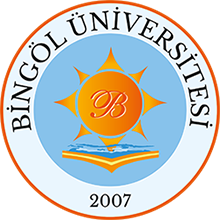The characteristics, emergent properties and manner of spread in Ukraine of the Porcine Epidemic Diarrhea Virus
Date
2018Author
Masiuk, D. N. and Nedzvetsky, V. S. and Sosnitskiy, I, A. and Kokarev,
V, A. and Koliada, S. G.
Metadata
Show full item recordAbstract
Study of the emergent properties and paths of spreading of PEDV was
carried out in a model experiment on newborn nonimmune piglets obtained
from a PED vims-free pig-breeding enterprise. The piglets were kept in
separate specialized containers, with a volume of 1.0 m(3), with access
only through the opening at the top of the containers. The experimental
group of the animals was infected with PEDV isolate extracted on one of
the pig farms from the central region of Ukraine. Infection was carried
out orally in a dose of 1-10 genome equivalents of virions. The control
piglets, which were situated in the same room as the infected animals,
were not deliberately infected. The study of biological material from
piglets was carried out using the methods of bacteriology, histology and
RT-PCR. To confirm the capability of PEDV to spread through house flies,
specimens of Musca domestica vicina Mcq. were caught in the building
where the experiment was carried out. The washings from the surface of
their bodies were collected with sterile saline. Individually, 28
specimens of flies were selected. They were divided into two parts and
the amount of vims in the homogenate of the fly bodies in these groups
was determined with an interval between measurements of 72 hours. Study
of PEDV in the washings and in flies body homogenates were carried out
using RT-PCR. It is established that the field strain PEDV, belonging to
the North American grouping II of the second group of the PED vims
strains, is an emergent highly pathogenic agent for nonimmune newborn
piglets. hi the model of piglets' infection it is established that the
tested PEDV strain has a high vimlence for newborn piglets, DCL is 1-10
virions and the incubation period is 18-26 hours. PED is acute with
lethality to 100\% within 68-72 hours after infection. According to the
results of RT-PCR in washing from the surface of the bodies of flies, it
is established that one of the ways piglets are infected and the
environment contaminated with the PED vims is the spread of the pathogen
by the flies M. domesfica vicina Mcq. This leads to the induction of the
emergent form of PED in piglets. The presence of PEDV in the homogenate
from bodies of M. domesfica caught in the focus of infection and the
absence of vims reproduction in their body confirms the role of the
house fly in the mechanical spread of PEDV in the external environment.
Collections

DSpace@BİNGÖL by Bingöl University Institutional Repository is licensed under a Creative Commons Attribution-NonCommercial-NoDerivs 4.0 Unported License..













